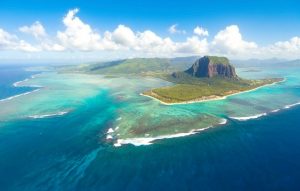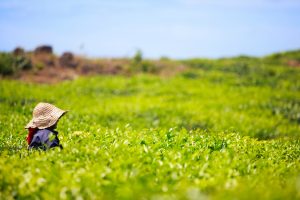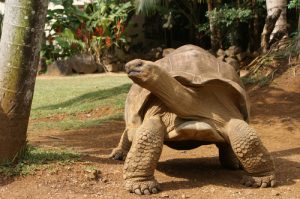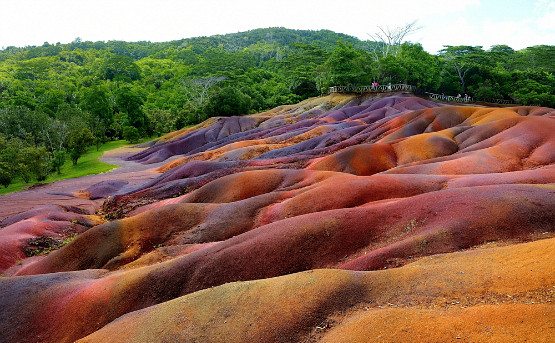Somewhere in the Indian Ocean lies an island so remote that until the age of European explorers, nobody lived there, nobody at all. It was there that the dodo flourished, blissfully ignorant of humankind and its destructive ways, upon an island paradise encircled by a turquoise lagoon. It is a place with beaches of rare and singular beauty, but it is neither the Maldives nor the Seychelles. It is a place with a stirring wildlife story, but is it not Madagascar.

Le Morne Brabant mountain (Shutterstock)
It is, in fact, Mauritius, home to everything that is good about Indian Ocean islands.
For all of that, the first time I laid eyes on her it wasn’t quite love at first sight. Mauritius was almost too perfect – the colour of its sea, the deep primary colours of this tropical paradise. I needed something more, something altogether more nuanced than the kind of place one would choose to spend one’s honeymoon. To make matters worse, in places the god of tourism reigned so supreme that near-perfect resorts, accessible in exchange for a king’s salary, seemed to occupy some of the island’s prime patches of real estate, idyllic perches that monopolised the views out over an eternal sea.

(Shutterstock)
But I quickly came to realise that this was an island of stories, a place where first impressions could mislead. And it was then that I fell in love.
Take the island’s wildlife story, for example. Forever synonymous with extinction, thanks to the sorry tale of the dodo, Mauritius is actually a story of spectacular wildlife success. No country has brought more bird species back from the brink of extinction than Mauritius. This is not abstract science – to hike through the dense forests while a Mauritius kestrel soars high above the Black River Gorges National Park, or to catch a glimpse of the vivid echo parakeet, or to stumble upon the beguiling pink pigeon on Île aux Aigrettes, is to be transported back to the dawn of civilisation on Mauritius, to a time before human beings first came ashore.
Click here to read more from the #InLoveWithAfrica series!

Pawel Kazmierczak / Shutterstock
Elsewhere, the counterpoint to the resorts that have colonised much of the coast is easily found. Rodrigues, for example, that deliciously remote isle that prides itself on a quieter, utterly unspoiled sensibility, is the place where the Mauritius of three decades ago still survives. You see it in the octopus hung out to dry along rarely trammelled country byways. Or in the charming table d’hôtes or guesthouses dedicated to a miraculous fusion of French and Creole cuisine. Or on Île aux Cocos, a lagoon island of palm trees, white sands and bird species as tame as the dodo once was.

A woman working at a tea plantation (Shutterstock)
On both Rodrigues and the Mauritius ‘mainland’, giant tortoises evoke a sense of an Indian Ocean Galapagos. The Sir Seewoosagur Ramgoolam Botanical Gardens, too, is an extraordinary outpost of fertility and curious natural phenomena – heart-shaped lily pads the size of cars, and talipot palms that flower only every four decades. There are the coloured sands of Chamarel, the haunting beauty of La Morne (the Mournful One) rising abruptly from the sea in the island’s far south-west, the distant views of waves breaking far out to sea where the lagoon meets the full fury of the open ocean.
And yet, there is more to this island nation, to these islands than a stirring tale of natural beauty and survival, for its human story, too, has the power to beguile.

Hindu Temple in Port Louis, Mauritius (Shutterstock)
This is a land colonised by at least four different cultures that together represent the great cross-currents of migration across the Indian Ocean. Downtown Port Louis, the nation’s capital, is a hot curry of cultures and faiths – Indian, Chinese and Creole, Hindu, Muslim and Christian. Far away, and yet not so far, on the south-eastern fringe of the island, Mahébourg hosts a pungent Monday market of smells and languages from across the sea.
In between the two, atop the Central Plateau that rises above the Mauritian interior, it is the sophistication of Chateau Labourdonnais, Domaine des Aubineaux or Saint Aubin, colonial-era houses that provide oases of calm. There are many such outposts of civility along La Route du Thé, a series of tea plantations that cross the main island from north to south.

Giant tortoise (Shutterstock)
Even so, it is the simple things that live longest in the memory and one in particular stays with me for the simplicity of its beauty, for the story it tells without words of a beautiful island at peace with itself and welcoming to all who come. It is of a woman riding her bicycle beneath the flowering trees of Pamplemousse, sheltering herself from the tropical sun with a parasol. When she catches my eye and sees me watching, her smile is instant and she waves in welcome.
More reasons we love Mauritius:
Paradise Almost Lost: Discovering The Wild Side Of Mauritius
15 Photos Of Mauritius That Will Make Your Jaw Drop
VIDEO: Dive Into The Underwater World Of Mauritius

